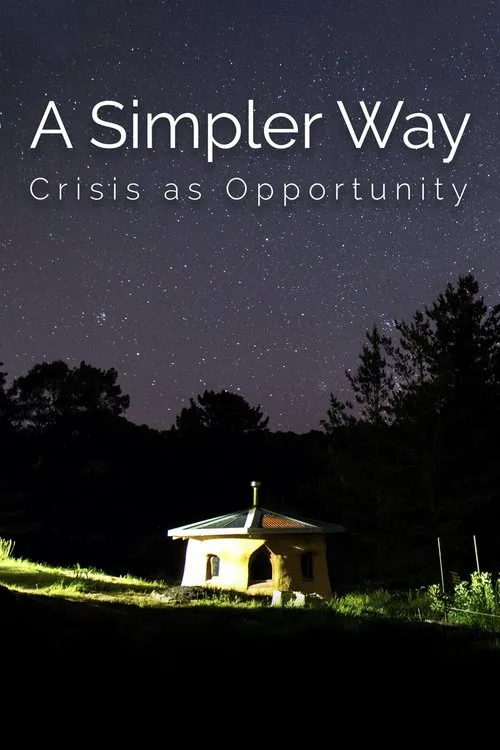A Simpler Way: Crisis as Opportunity

Plot
A Simpler Way: Crisis as Opportunity, set in rural Australia, is a thought-provoking documentary that delves into the lives of a group of individuals from diverse backgrounds, united by their quest to redefine their relationship with the planet and reevaluate their priorities. This documentary showcases the experiences of a community who embarked on a remarkable experiment to cultivate a simpler way of living, guided by the understanding that the complexities of the modern world have led to environmental degradation and societal disintegration. The film presents a compelling scenario, in which a small group of volunteers, driven by their desire to make a meaningful change, acquired a 20-acre property on a rural coast in Australia. This vast expanse of land, with its abundance of natural resources, served as the perfect setting for the experiment – a place where the volunteers could free themselves from the constraints of suburban living and reconnect with the earth. The participants of the community came from various walks of life. There were young couples, retired individuals, and families with children – all united by their yearning for a more authentic and fulfilling existence. They saw an opportunity to redefine their relationships with each other and their environment by abandoning the trappings of modern society. This decision marked the beginning of a journey that would test the resilience of the community as they confronted the intricacies of self-sufficiency, cooperation, and sustainability. As the documentary unfolds, the viewer is taken on a visual and emotional journey, witnessing the transformation of lives and landscapes alike. From the moment the volunteers arrive, they set to work to build their new home – using organic materials, constructing solar-powered dwellings, and establishing a permaculture garden that utilizes rainwater harvesting, composting toilets, and renewable energy sources. The film highlights the challenges faced by the community, as they navigate the nuances of communal living and confront their own personal biases and limitations. Throughout the documentary, the participants reflect on their motivations for embarking on this journey. Some speak of the disillusionment with modern society's focus on consumption and growth, while others express a desire to reconnect with their children and themselves. These conversations provide valuable insights into the complexity of human emotions, revealing the depth of emotional connections that can form within small, tight-knit communities. As the seasons unfold, the community faces numerous trials, both internal and external. Weather patterns change, affecting their reliance on renewable energy; relationships within the community fracture and mend; and financial pressures mount. However, these challenges also serve as catalysts for growth, as the participants come together to discuss, problem-solve, and learn from their experiences. The documentary showcases their capacity to be honest with each other, embracing their flaws and celebrating their collective successes. The film delves into themes of cooperation, self-sufficiency, and resilience, highlighting the value of living in harmony with nature. By showcasing the community's efforts to cultivate their own food, generate their own power, and create their own currency, the documentary presents an attractive alternative to the high-technology, high-consumption lifestyles that dominate the modern world. One of the most striking aspects of this documentary is its capacity to evoke emotions in the viewer. By capturing the vulnerability, hope, and frustration of the community members, the film conveys the inherent difficulties of transitioning from a modern lifestyle to one that is more aligned with the principles of sustainability and permaculture. As the story unfolds, the viewer begins to feel an emotional connection with the participants, becoming invested in their journey and the lessons they learn along the way. As the documentary comes to a close, the community that was once a collection of strangers has grown into a tight-knit group, each member enriched by the experience and forever changed by it. The journey of discovery, as documented in A Simpler Way, serves as a compelling case study for the transformative power of community-driven, eco-conscious living. The film encourages the viewer to reexamine their own priorities, questioning the notion that a simpler way of living is a sign of weakness, rather than a courageous step towards true fulfillment. Ultimately, A Simpler Way presents a powerful testament to the potential of human collaboration and the resilience of our species in the face of adversity. Through its poignant portrayal of a community in transformation, the documentary inspires viewers to reevaluate their relationship with the earth and each other, inviting them to envision a better future for themselves and their planet.
Reviews
Recommendations



